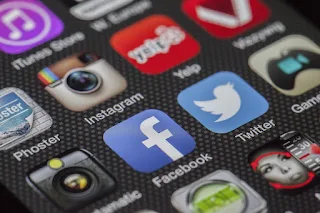Have you ever received a new device and had no idea how to use it? If you're anything like me, you've had to learn how to use a new piece of technology multiple times over the years.
Now imagine being a teacher, with 20-25 students in your classroom, and you are expected to integrate technology into your lessons, have your students use their devices, and try to teach and manage all the students in the room. It can be a challenge.
Many new teachers come into teaching thinking they understand technology because they use different social media's on their phones, but technology goes much farther than just social media. Most teachers are at the entry level of technology integration. Kharbach (2024) describes the entry level as "technology used by teachers to deliver content to students". Khabach (2024) goes on to say that "using a projector to display lecture notes" is an entry level integration of technology. Teachers need to learn how to effectively use technology to build student success. The goal is for teachers to be at the Infusion Level and use technology tools daily in teaching and student-centered work (Kharbach, 2024).
Now, how can we advance teachers to higher levels of technology integration? Well first we have to start with administration. If administrators are not actively using technology and learning the different ways it can be integrated into their schools, then most likely teachers do not see it as an important aspect of school. Administrators have to lead by example. Attending professional developments on new technology and ways to integrate it is a starting point for many administrators. Above all else, they have to be willing to try.
Once administrators have been trained and are adept to usage and policies, then teachers can know that their school is serious about technology infusion. There are many times that we receive new technology and we aren't trained on how to properly use it, so it becomes a waste of funds because it sits collecting dust. Essential conditions for effective tech use in schools (2023) states, "school systems without a plan for evaluation and selection of learning materials end up wasting resources, losing focus, and hindering their ability to evaluate effectiveness". When new devices are purchased, leadership does not think to put a professional development plan in place first so that teachers and staff are prepared for how to successfully use it in the classroom.
References:
Eden Joyce Baguio. (2018, January 12). 5Levels of Technology Integration [Video]. YouTube. https://www.youtube.com/watch?v=dsqtuNM3y1o
Frazier, M., & Hearrington, D. (2024). Technology Coordinator's Handbook: A Guide to Edtech Facilitators and Leaders. International Society for Technology in Education.
Kharbach, M., PhD. (2024, November 6). What is technology integration in the classroom? - Educators technology. Educators Technology. https://www.educatorstechnology.com/2023/12/technologyintegration.html

.png)


%20(1).png)

Keley,
ReplyDeleteGreat discussion about the challenges teachers and schools face when given brand new technology without any professional development or training. All too often schools and districts purchase these great new products, but then hand them to the teachers with minimal to no training. Frazier and Hearrington (2024) state, "The promise of technology to positively affect teaching and learning is largely related to the support teachers get for their teaching." (p. 134). In accordance with that, Hossain (2024) states, “... it is crucial for educational leaders and policymakers to place high importance on the creation and utilization of user-friendly technologies to make it easier for instructors to accept them.” (p. 193) Without the use of adequate and helpful teacher training and the ease of use of these new technologies, teachers will feel left in the dark and often hesitant to implement them in their own classrooms. It is up to the school administration or technology coordinators to not only focus on the new technology purchased, but also how to train teachers effectively in using these new programs. Great job!
References
Frazier, M. & Hearrington, D. (2024). The technology coordinator’s handbook (4th ed.). Portland, Oregon: International Society for Technology in Education.
Hossain, M. (2024, October). Professional standards and educational leadership: Higher secondary teachers' behavioral intention towards adopting new teaching technologies. Business, Ethics, and Leadership, 8(3). https://doi.org/10.61093/bel.8(3).184-198.2024
Hey Keley! Your blog post was very well written and informative! I have definitely had the feeling of crashing and burning with some new technology in front of a large class of middle school students. Sometimes the simplest problems can cause unexpected roadblocks. I fully agree that casual use of technology does not equate to classroom readiness. According to Frazier and Hearrington (2024), there are five steps to teacher professional development for effective use of technology: relevancy, experience, self-direction, problem-centered, and intrinsically motivated. These professional development experiences require a commitment of time and resources from district leaders which is why carefully choosing which technologies to integrate is so important. Administrators leading by example is so important. If school leaders are growing in their understanding of technology then teachers will be more willing to put in the time and effort it takes to master these tools as well.
ReplyDeleteFrazier, M. & Hearrington D. (2024). The technology coordinator's handbook: A guide for edtech facilitators and leaders. International Society for Technology in Education World.
I really appreciate your discussion on the challenges of technology integration in the classroom. This is real and it can be discouraging at times making educators feel defeated. One major hurdle is the varying levels of digital literacy among teachers and students. While some educators feel confident using new tools, others may struggle with implementing them effectively. Overcoming these challenges requires strong administrative support, training opportunities, and a willingness to adapt teaching methods to enhance student learning through technology.
ReplyDeleteReference:
Frazier, M., & Hearrington, D. (2024). The technology coordinator's handbook (4th ed.). International Society for Technology in Education.